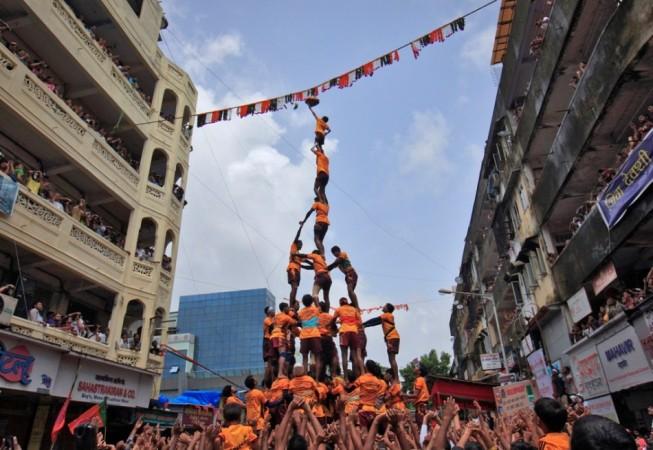
Krishna Janmashtami, as the name suggests, is the birthday of Lord Krishna in Hindu mythology. It is a fixed date according to the lunar calendar the Hindus follow, but varies when it comes to the Gregorian calendar. Krishna Janmashtami 2016 falls on Aug. 25, and the whole nation is geared up to mark the occasion in the manner they do every year, and it is different for each corner of the country.
The origin
Krishna Janmashtami actually marks the Lord Vishnu taking one of his earthly forms or avatars -- yes, that is where the word comes from -- to cleanse the world of evil. And as the story goes, his birth is no coincidence but the result of a heavenly ploy that had been eons in the making.
One part of this story started long ago, and is considered one of the earliest chapters of the "Mahabharata." King Yayati was already married to powerful ascetic Shukracharya's daughter Devyani when he set his sights on Sharmishtha and married her as well.
A hurt Devyani complained about this to her father, who cursed Yayati with the symptom of old age even though he was young. However, as was wont with sages of the time, his rage cooled soon, and he told Yayati he could enjoy worldly pleasures again if any of his children willingly took the symptoms from him and gave him their youth.
All of Yayati's sons, including Yadu, refused when he requested them to give him their youth, but Puru readily agreed. Their true nature revealed, Yayati cured all but Puru that their children would never be king. And he blessed Puru, saying his lineage would become the most renowned kings of Bharata.
Thus it was that Yadu's progeny became Yadavs, who tended to cattle and goats for a living. They had their own rulers, but none were kings in the truest sense of the word. It was in a family of one of these tribes that Lord Krishna would be born, and another family where he would be fostered.
Krishna himself was the eighth son of Yadav leader Vasudev and Vrishni ruler Kansa's sister Devaki. At some point during Vasudev and Devaki's wedding, there was a forecast that their eighth son would be the cause of Kansa's death.
The tyrant ruler Kansa was, he imprisoned both his sister and brother-in-law, and killed six of their sons. Their seventh son was somehow transferred to the womb of Vasudev's second wife, Rohini. He would grow up to be Balarama or Balabhdra.
When time came for the birth of their eighth son, a lot of strange things happened, the confluence of which helped Vasudev go out of the heavily guarded prison with the infant Krishna, cross a river in spate with the child in a basket above his head as a divine serpent acted as the boy's umbrella, and to his stepbrother Nanda's house.
There, he swapped the boy with Nanda and Yashoda's newborn daughter -- the goddess Yogamaya in human form -- and returned to prison. When Kansa tried to kill this girl, thinking her to be his nemesis, she flew out of his hands, took her original form, and warned him that the boy who would kill him was alive and well.
The celebration
It is this divine and holy occurrence, by which an infant Krishna was saved, that is commemorated on Krishna Janmashtami.Thus it is that the devout worship an infant or newborn form of Krishna, putting and decorating small idols of him in tiny cradles. They also dress up their children as little Krishna's with the ever-present peacock feather on his head and a flute in his hands.
The occasion is also marked by distribution of sweets and flying of kites in some parts of India. However, in some places, like Maharashtra, it is Krishna's toddler years that are commemorated. As a toddler, he was quite naughty, and loved himself some butter. However, butter or similar dairy products, made by the women of the house after a hard day's work, was often kept out of children's reach, hung from the ceiling in earthen pots.
Krishna and his friends would make human pyramids to reach these pots, break them and consume all the butter. It is this aspect of his childhood that is commemorated in the famous dahi-handi celebrations of Maharashtra.













